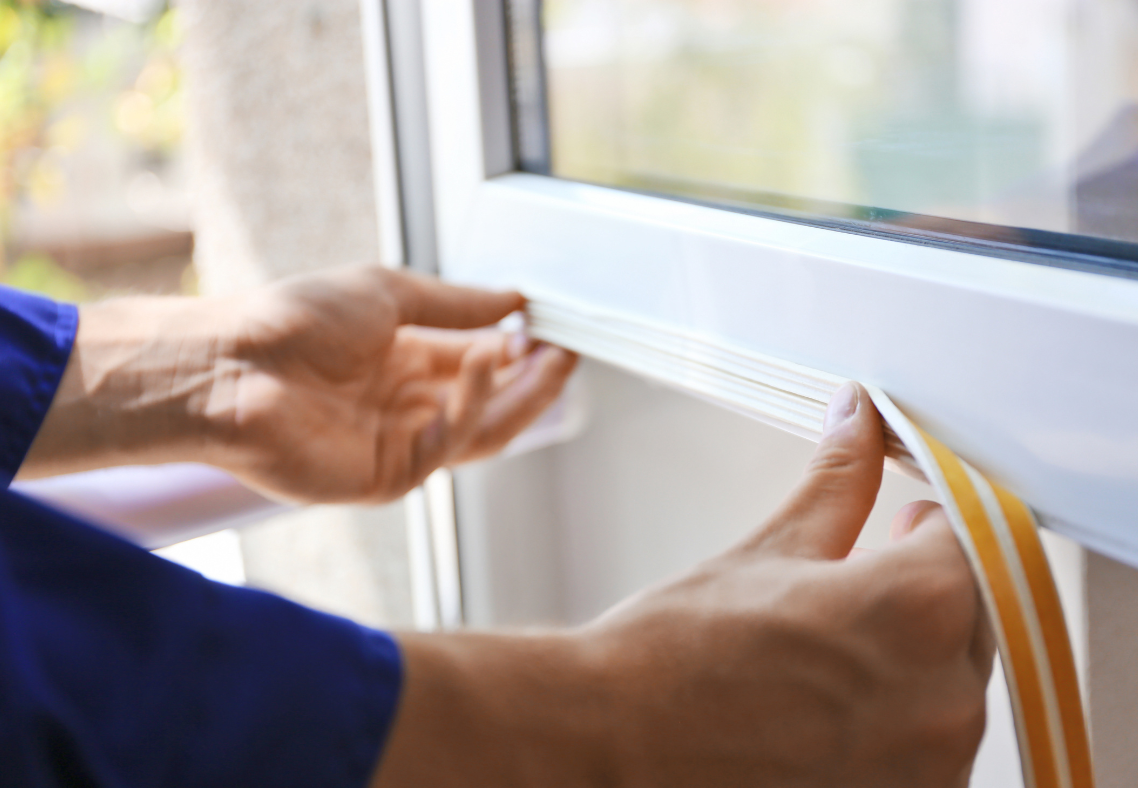How To Fix A Window That Won’t Stay Up
Roof Right: Exterior Home Remodeling Specialists in Maryland Contact UsSchedule A Free EstimateA window that won’t stay up is more than just an annoyance; it can also be a safety hazard, especially in homes with children or pets. Imagine opening your window to let in a fresh breeze, only to have it slam shut unexpectedly. This can lead to injury, broken glass, or damage to the window itself. If you’re dealing with this issue, don’t worry—it’s a common problem that can usually be fixed with a few basic repairs. For homeowners in Maryland, understanding how to address a window that keeps falling is crucial, especially if you want to maintain the comfort and security of your home. In this blog, we’ll cover the common causes of falling windows, how to fix the problem, and whether it might be time to consider replacing your windows altogether.
Answering The Question: How To Fix A Window That Won’t Stay Up?
What Causes a Window To Keep Falling?
The most common reason a window won’t stay up is due to a problem with the window’s balances. Window balances are small mechanisms inside the window frame that counterbalance the weight of the sash (the part of the window that moves up and down). When these balances become detached, worn out, or damaged, the sash loses its support, causing the window to fall when opened.
Here are the two main reasons your window keeps falling:
Detached Balances
In many cases, the balances may have become detached from the window sash. The window balances are crucial for holding the window in place, and if they’re not properly connected, the window will not stay up. Detached balances are often the result of wear and tear or improper use, but they can usually be reconnected or replaced fairly easily.
Malfunctioning or Damaged Balances
Even if the balances are still connected to the sash, they can become damaged or worn out over time. Balances, like any mechanical part, degrade after years of use and may not provide enough tension to hold the window open. If your balances are malfunctioning, it’s important to address the issue sooner rather than later to prevent further damage to the window or potential safety hazards. Regardless of the specific cause, fixing a falling window is something you should prioritize. Not only is it inconvenient, but a malfunctioning window can also lead to higher energy costs as it may not close properly, allowing drafts and outside air into your home.
How to Fix a Window That Won’t Stay Up
Fixing a window that won’t stay up depends on the underlying issue, but most solutions are relatively straightforward. Here’s a step-by-step guide to help you troubleshoot and repair the problem:
Inspect the Window
Before jumping into repairs, it’s essential to inspect the window and determine the root cause of the issue. Check for any visible signs of damage, such as bent or snapped pivot bars, broken balances, or worn-out shoes (small blocks inside the frame that help secure the sash). Also, check whether the window is sitting evenly in the frame, as misalignment can cause problems with opening and closing.
Replace the Pivot Bar
One of the simplest fixes is replacing the pivot bar, which connects the balances to the sash. If the pivot bar is bent, broken, or not engaging properly with the balances, the window will fail to stay up. Replacing the pivot bar is usually an easy task:
- Step 1: Remove the sash by tilting it inward and lifting it out of the window frame.
- Step 2: Locate the pivot bar, which is attached to the bottom of the sash. If it’s damaged, unscrew it and replace it with a new pivot bar.
- Step 3: Reattach the sash and test the window to ensure the new pivot bar holds the window in place.
Replace the Shoes or Balances
If the pivot bar is in good condition, the next step is to check the shoes and balances. Shoes are small plastic or metal blocks that sit inside the window frame, and they play a crucial role in holding the window in position. Damaged shoes can prevent the window from staying up, as there’s nothing for the pivot bar to grip onto.
The balances, on the other hand, are the mechanisms responsible for counterbalancing the weight of the window. There are three main types of balances:
- Spiral Balances: These are spring-loaded devices that are common in older windows. They use tension to hold the window up.
- Constant Force Balances: These use a coil spring system to keep the window in place.
- Block and Tackle Balances: These feature pulleys and cords to counterbalance the sash.
If the balances are broken or malfunctioning, you will need to remove them carefully and replace them with new ones. Be cautious when removing balances, as they are often under tension and can spring out if not handled correctly.
Temporary Fixes for a Falling Window
If you’re in need of a quick fix to prevent the window from falling while you source parts or schedule repairs, you can use some temporary solutions. A common method is to use a window stop or a stick placed inside the window track to prevent it from sliding down. While this isn’t a permanent fix, it can keep the window safely in place until a full repair is made.
Consider Replacing Your Windows
If your window is very old or you’ve already tried repairing the balances and other parts multiple times, it may be time to consider replacing the entire window. Modern windows are not only more energy-efficient, but they are also less prone to mechanical failures that cause them to stop working properly. Additionally, newer windows come with enhanced safety features, such as reinforced glass and improved locking mechanisms, providing better security for your home.
In Maryland, where extreme temperatures can lead to high heating and cooling costs, upgrading to energy-efficient windows can help reduce your utility bills. If your windows are outdated or consistently failing, replacing them may be the best long-term solution.
When Should You Call a Professional?
While some window repairs can be done yourself, more complicated issues—like replacing the balances or dealing with structural problems—should be handled by a professional. In addition, if you’re unsure about the type of balance your window uses or if you’re unable to source the correct replacement parts, a window repair specialist can quickly diagnose the problem and offer a lasting solution.
Preventing Window Problems in the Future
Maintaining your windows can help prevent them from falling in the future. Here are some tips to keep your windows in good working condition:
- Regularly clean your windows to remove dirt and debris from the tracks and frames.
- Inspect the sealant around the windows to ensure there are no gaps that can lead to drafts or damage.
- Lubricate moving parts like the cranking mechanism and balances to ensure smooth operation.
- Test the window balances periodically to make sure they are functioning properly.
Contact Roof Right For Window Repair Services In Maryland
If you’re struggling with a window that won’t stay up or you’ve noticed other issues with your windows, Roof Right is here to help. We specialize in window repairs and replacements for homeowners in Hampstead, Westminster, and throughout Carroll County, Maryland. Our experienced team can quickly diagnose the problem and offer the most effective solution, whether it’s repairing the balances or replacing the entire window. Don’t let a malfunctioning window compromise your safety or comfort—Contact Roof Right today to schedule a consultation. Let us help you restore your windows to full functionality and improve your home’s energy efficiency!
Areas We Serve
If you're looking for a roof contractor in Maryland, give Roof Right a call today at (410)-374-5923 to schedule an appointment!
Carroll County
Howard County
Clarksville, Columbia, Elkridge, Ellicott City, Fulton, Jessup, Laurel, Woodstock
Montgomery County
Baltimore County
Baldwin, Bradshaw, Carney, Cockeysville, Glen Arm, Hunt Valley, Jacksonville, Kingsville, Lutherville, Nottingham, Overlea, Owings Mills, Parkton, Parkville, Perry Hall, Phoenix, Pikesville, Reisterstown, Sparks, Timonium, Towson, White Marsh

